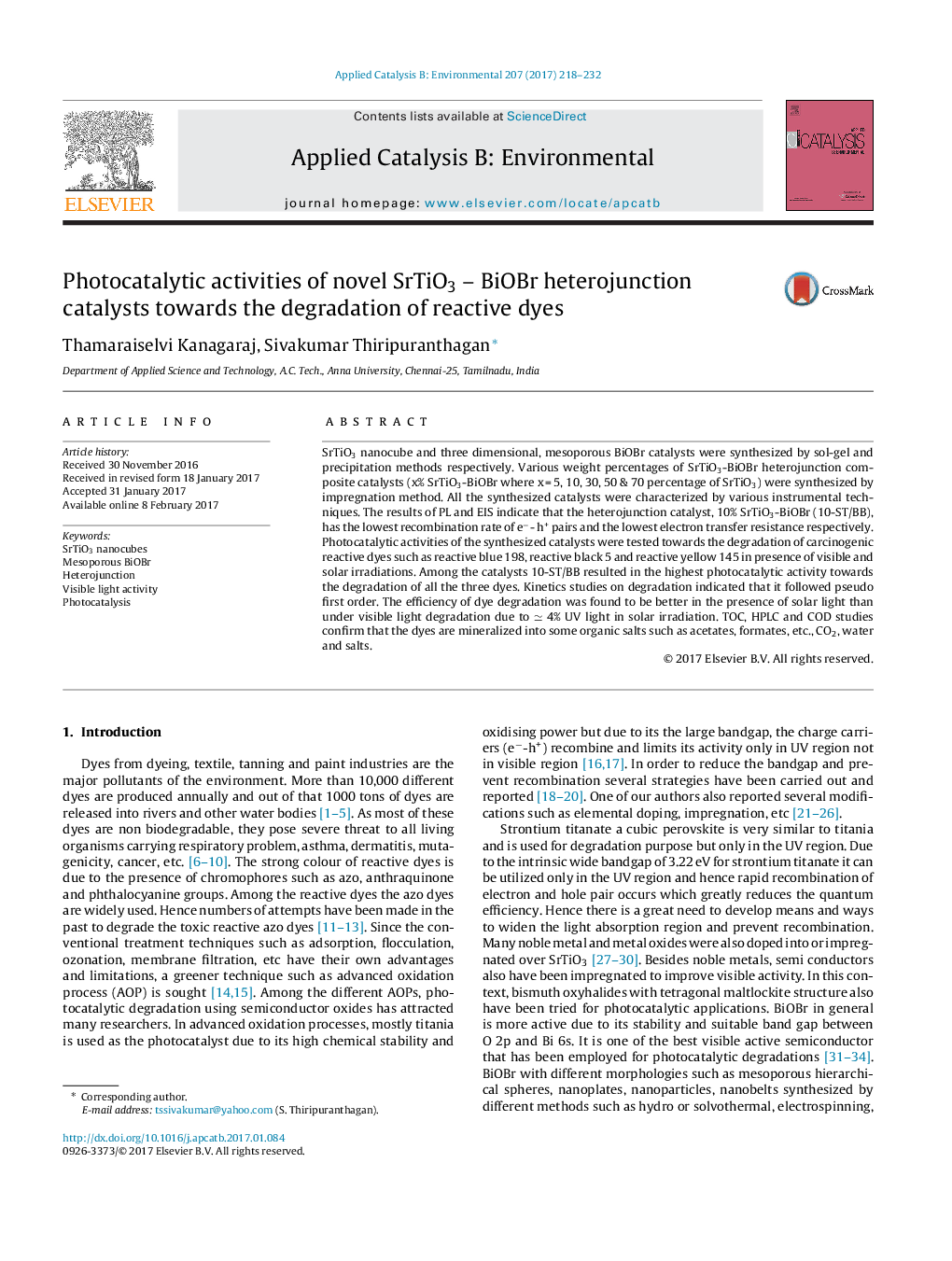| کد مقاله | کد نشریه | سال انتشار | مقاله انگلیسی | نسخه تمام متن |
|---|---|---|---|---|
| 6454068 | 1418813 | 2017 | 15 صفحه PDF | دانلود رایگان |

- SrTiO3-BiOBr heterojunction catalysts were successfully synthesized and being reported for the first time.
- PL and EIS studies confirm lower electron hole pair recombination and lower electron transfer resistance than BiOBr.
- All the catalysts were visible active in the degradation of reactive blue 198, reactive black 5 and reactive yellow 145.
- Among the heterojunction catalysts, 10-SrTiO3-BiOBr catalyst was found to be highly visible-active.
- HPLC, TOC and COD studies confirm that the dyes are degraded into formates, acetates, CO2, water and mineral salts.
SrTiO3 nanocube and three dimensional, mesoporous BiOBr catalysts were synthesized by sol-gel and precipitation methods respectively. Various weight percentages of SrTiO3-BiOBr heterojunction composite catalysts (x% SrTiO3-BiOBr where x = 5, 10, 30, 50 & 70 percentage of SrTiO3) were synthesized by impregnation method. All the synthesized catalysts were characterized by various instrumental techniques. The results of PL and EIS indicate that the heterojunction catalyst, 10% SrTiO3-BiOBr (10-ST/BB), has the lowest recombination rate of eâ- h+ pairs and the lowest electron transfer resistance respectively. Photocatalytic activities of the synthesized catalysts were tested towards the degradation of carcinogenic reactive dyes such as reactive blue 198, reactive black 5 and reactive yellow 145 in presence of visible and solar irradiations. Among the catalysts 10-ST/BB resulted in the highest photocatalytic activity towards the degradation of all the three dyes. Kinetics studies on degradation indicated that it followed pseudo first order. The efficiency of dye degradation was found to be better in the presence of solar light than under visible light degradation due to â 4% UV light in solar irradiation. TOC, HPLC and COD studies confirm that the dyes are mineralized into some organic salts such as acetates, formates, etc., CO2, water and salts.
169
Journal: Applied Catalysis B: Environmental - Volume 207, 15 June 2017, Pages 218-232